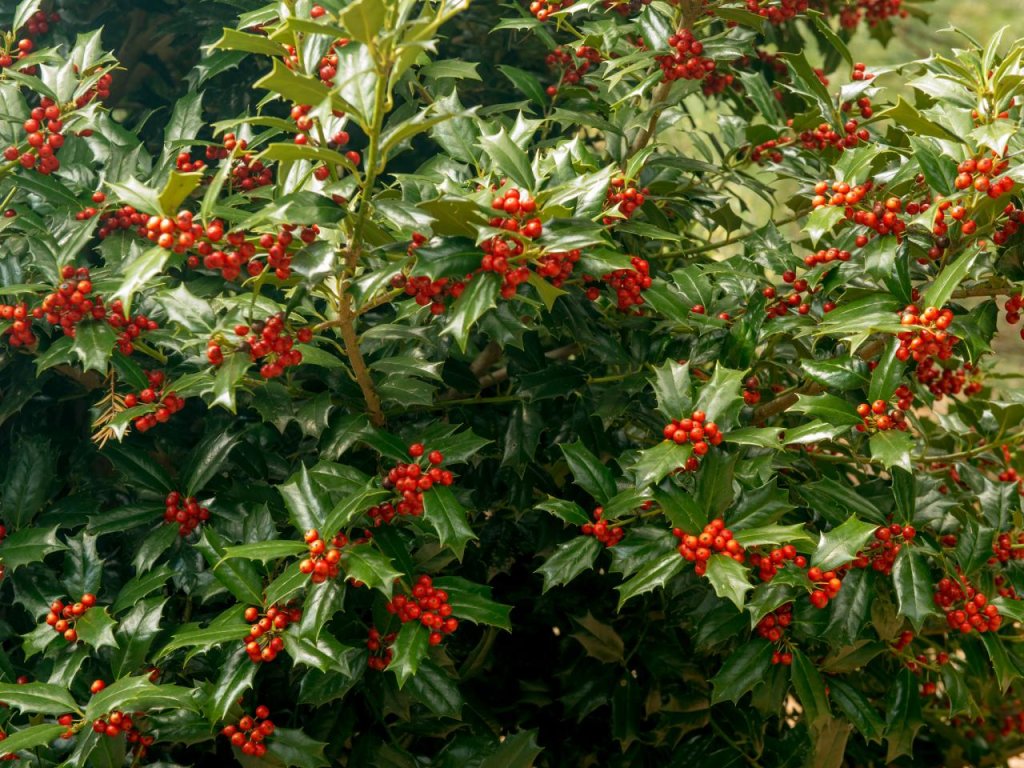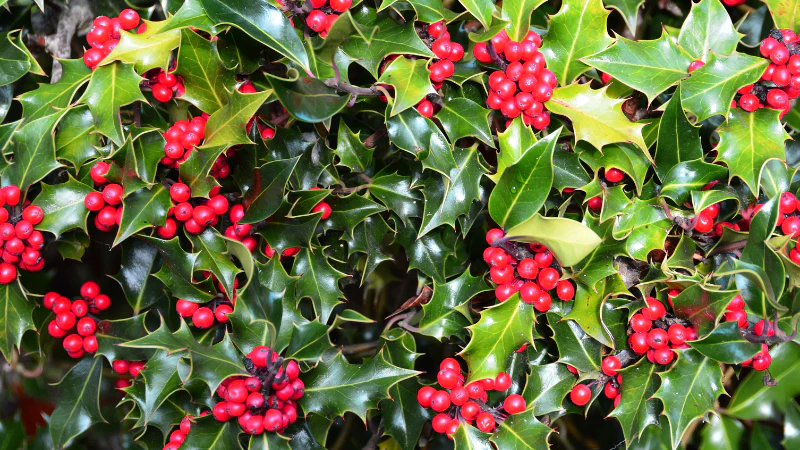Does your holly bush not look flourishing, or doesn’t it portray its beauty to the utmost? It’s probably because it has been planted in the wrong place.
Wrong place; what does it mean? It simply means it’s planted at a place that doesn’t fulfill its basic need to grow.
So what’s the right place? Where to plant these types of bushes? What are its basic requirements to make it flourish to its true potential? If you’re seeking a solution to all these queries, rest assured you have come to the right place.
Explore below to learn where to plant holly bushes to make them look mesmerizing and elevate your garden aesthetic and ambiance.
Where to Plant Holly Bushes?

Holly Bushes come in a variety and are adaptable to various locations, but they vary from species to species.
However, if you choose a location that encompasses all the below-listed factors, your holy bushes will grow properly and give out a mesmerizing appearance.
- Sunlight: The most essential factor; most of the holly varieties prefer partial to full sunlight. Opt for a place that receives adequate light for at least 4-6 hours.
- Soil: Holly Bushes are versatile, i.e., they respond well to various types of soil such as sandy, loamy, and clayey, but remember, well-drained soil is a primary requisite irrespective of the soil type you choose.
- Spacing: Ensure your location has enough space to allow holly to mature properly. It’s advisable to provide 3 to 6-foot space to ensure healthy growth; however, this may vary depending upon your choice of species.
- Climate: Holly Bushes can grow in various climates, but remember, some species may respond well to a particular climate, but others may not. Therefore, choose a variety that is well suited to your climate.
Suitable Species According to Climate Type
Sometimes, it may happen that despite keeping all the factors in mind, the result isn’t fruitful. The reason is the improper selection of species. We are listing down species suitable to climate type, so choose depending upon your climate.
- If your location has a tropical climate, i.e., receives high temperatures year-round with fluctuations and high humidity, opt for Chinese Holly (Ilex cornuta). It adapts well to the warm and humid conditions of tropical climates.
- Do you reside in a place that possesses a desert climate, i.e., experience extremely high temperatures during the day and cool temperatures at night? Inkberry Holly (Ilex Glabra) is suitable because it is drought-tolerant.
- Mediterranean climate, which means hot, dry summers and cold winters, is perfect for growing English Holly (Ilex aquifolium).
- If your region experiences moderate temperatures throughout, choose American Holly (Ilex opaca); it responds well to temperate climate, flourishing well and portraying its beauty to true potential.
How to Grow a Holly Bush?
Firstly, opt for a suitable location that receives partial to full sunlight; ensure the soil is well-drained. Dig a slightly shallow hole that is twice the width of the root ball.
Place the holly bush, ensuring it sits in the same place as it was in the container. Fill the hole with a mixture of soil and compost. Water the plant thoroughly just after you settle the soil; this helps better root establishment.
Mulch around the base of the holly to preserve moisture and suppress weeds. Care as it grows.
How to Care for Holly Bush?
Holly Bush is a low-maintenance plant, so all you need is to fulfill the basic requirement that any other plant needs to grow. Ensure the soil is well-drained and the Holly remains exposed to partial to full sunlight. Once the late winter or early spring arrives, prepare yourself for pruning; remove dead and crowded branches. Fertilize with a balanced and slow-release fertilizer in spring and protect using burlap in harsh winter.
Conclusion
Now that we are towards the end of the article, we believe you must have understood where to plant the holly bushes. So, be careful with your spot selections, as the right place matters for the proper growth of holly and its berries.
Further, remember that berries flourish only on female plants, so choose a female variety independent of male plants for producing berries or plant male and female plants side-by-side or nearby.
Feel free to ask if you have any queries; we’ll respond promptly. Comment below and share if you like it!
Frequently Asked Questions
What’s the Best Location for Planting Holly Bushes?
It depends upon the type of Holly Bush you want to grow. Generally, Holly Bushes grow in well-drained soil and partial to full sun. Choose an area that has good air circulation and enough to accommodate their big size (6-15 feet) at a later stage.
Are There Different Types of Holly Bushes to Choose From?
Absolutely! Holly Bushes come in a wide range of varieties that include Japanese, Yaupon, Inkberry, Ilex cornuta, and more. But remember, each of these has specific requirements, so it would be good if you choose depending on your native climatic conditions and space.
When and How to Prune Holly Bushes?
Pruning needs to be done whenever necessary; however, it’s good to prune holly bushes in late winter or early spring before the beginning of new growth. Holly bushes are prickly, so wear gloves before pruning them to the desired shape. Remember to remove the dead and damaged branches.
How Do You Prevent Pests and Disease in Holly Bushes?
Preventing pests and disease is a main concern in Holly bushes. Try to grow it in a spacious place with proper air circulation. Further, regularly inspect for pests like aphids and diseases like leaf spots. Treat with fungicides or horticultural oil, if any.

